

Tseri – a village on the outskirts of Nicosia. And the location of an incredible myth. Hidden in the Tseri countryside is a mysterious flight of steps into the earth. Where do they lead? The myths talk of hidden treasure in a subterranean room. But are the steps still there? And could we find them?
During bored moments, I Google things like ‘hidden tunnel Cyprus’ to see what it throws up. It was during one of these searches a couple of years ago that I first heard about the ancient stairway in Tseri. It was found by a farmer in 1949 and villagers secretly tried to excavate it, hoping to find treasure. Rumours of treasure grew from a myth that the Romans moved their gold and buried it inland, away from raiders attacking coastal towns.
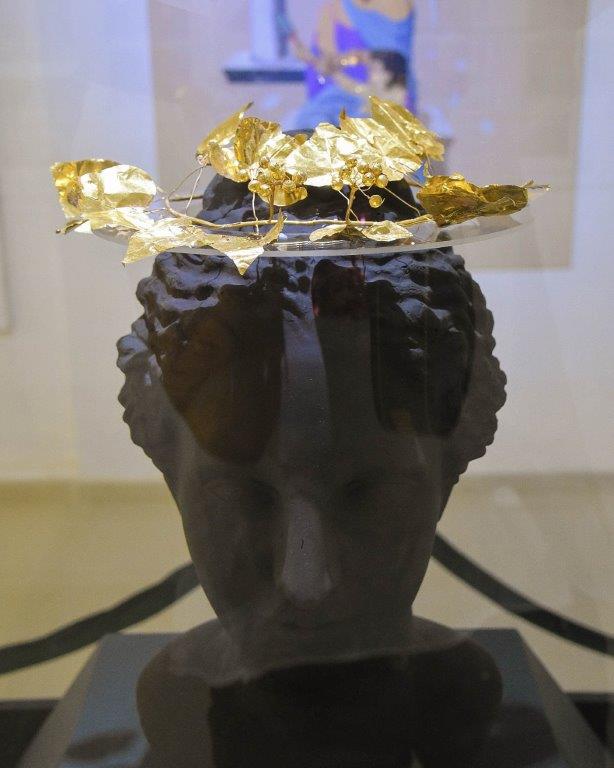
The stairway was sealed back up when the British colonial rulers were told about it. It remained that way until 2006 when villagers once again tried to excavate it, wanting to know where the stairway led. In 2010 archaeologists spent two months excavating 40 steps and still didn’t reach the bottom. The Department of Antiquities website suggests there had been the plan to continue the dig the following season. But nothing further happened and for the last decade all has gone quiet.
The story of this underground stairway and its treasure myths stayed with me. Had any more work been done on it? Or had it been resealed? I wanted to find it.

I started with online articles written in 2006 and 2010. I found four clues about the location:
And that was it.
I started my search by trying to find the Almyros river. Google satellite images have helped me before, but finding the river took me two hours. In Cyprus the rivers are often dry and not clear on satellite images. And it wasn’t named on the maps either. So I looked for river-like lines of trees whose roots would be drinking from the water table beneath the dried river bed. 2km from Tseri. Finally, I found trees following this pattern – and to the south-east too. It had to be the Almyros!

The next step was to drive there. We turned left off the A1 motorway a few kilometres before Nicosia and headed along the E120 towards Tseri. As we drove I could see the snake-like line of trees following the dried-up Almyros river. We were approaching Tseri from the south-east and, as I looked at the kilometres of golden fields and hills, I realised we were searching for a needle in a haystack.
My only hope was that the underground stairway was a local attraction and there would be a sign pointing the way.
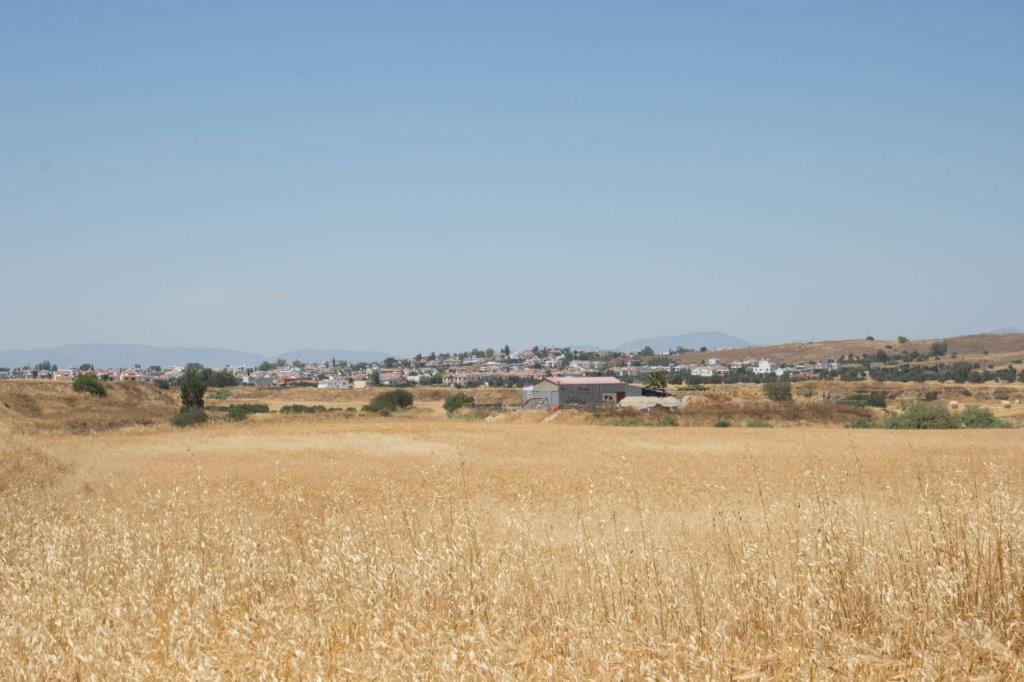
We drove around Tseri but there were no signs to the stairway. As we’d discovered the previous week, there are utter gems on this island that are totally hidden away.
We headed south to where the road crosses the Almyros. It crossed almost exactly 2km from the village centre – confirmation that this was indeed the Almyros. Our plan was to drive east along the banks of the river until we were no longer south-east of Tseri.
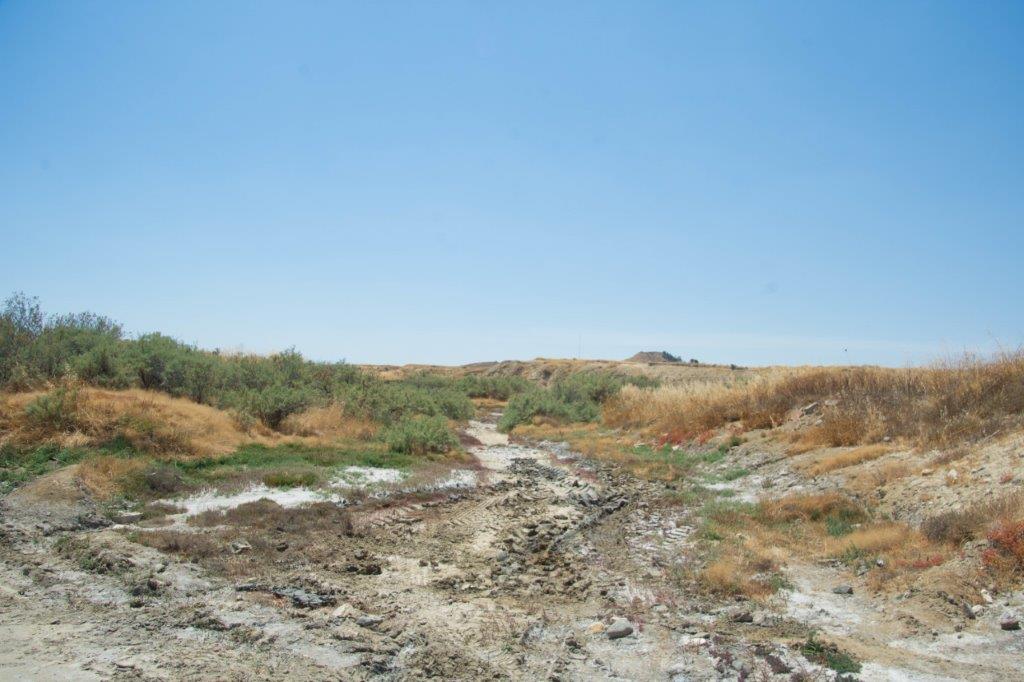
We drove down dusty tracks, scanning olive groves for any sign of a tunnel. My heart sank. We’d never see the stairway unless we were directly on top of it. And who knew which side of the river it was on? It was too big an area to search on foot.
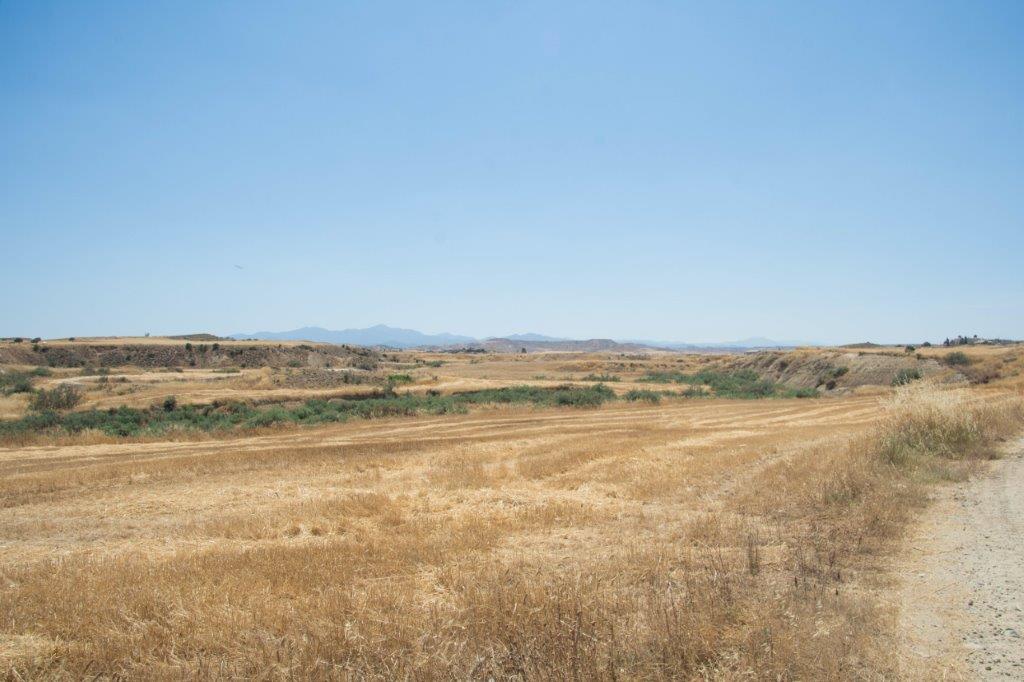
I thought about what I’d seen before when we’ve been out exploring obscure archaeological monuments. If they’ve been excavated, they almost always have a humble chain-link fence around them. And there had been plans to continue the excavation of the stairway – so surely they’d have built some kind of structure over it to protect it? This would be our only chance of spotting it.
I opened Google maps on my phone and used satellite images to scan all the olive groves near the river. And I found this:

It looked like a small structure in an olive grove, near the river, 2km south-east of Tseri. Could this be it?
We shot along the tracks towards it. ‘It’s probably just an animal shelter,’ I said.
We drove past some farm buildings and up a slope. I could see the low-slung roof ahead. Definitely an animal shelter.
We hopped out to have a look.
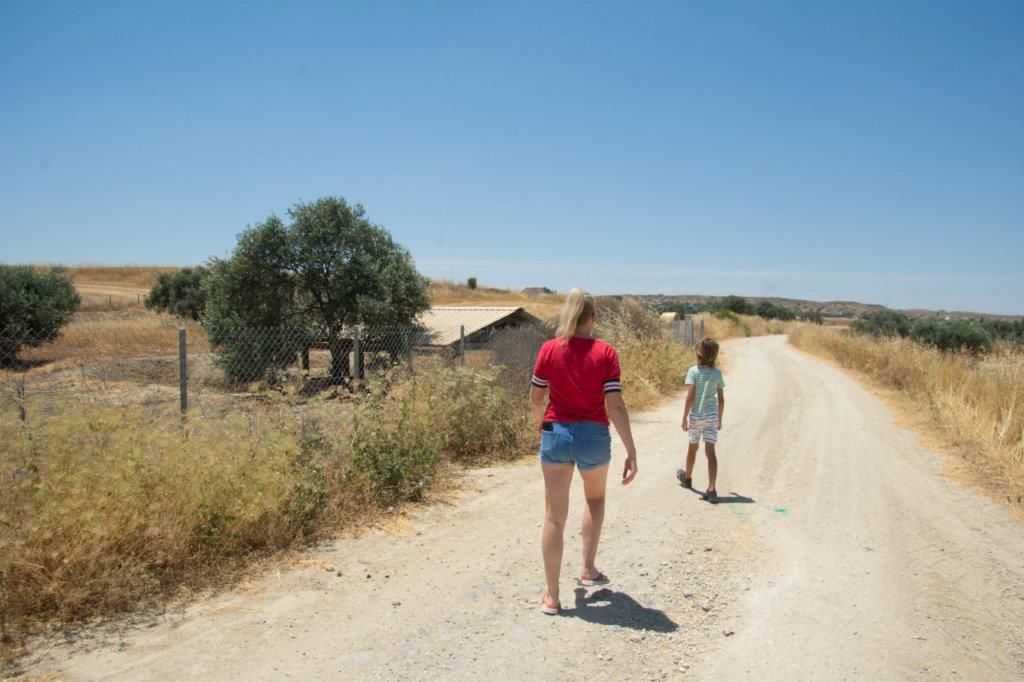
And this is what we saw:
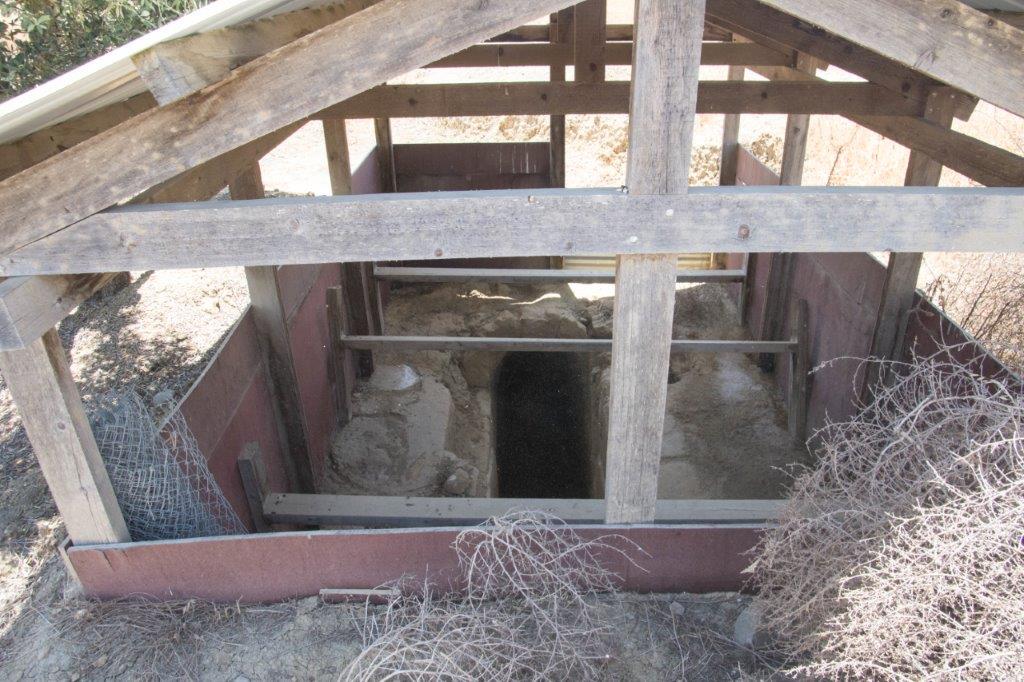
I’d only just gone and found the needle in the haystack!! If I do say so myself, I was rather proud of my detective skills.
As predicted, a humble chain-link fence surrounded the area. You couldn’t see much of the tunnel by peaking over the fence though. I spotted an area of the fence that had been squashed by other curious visitors and I hopped over it.
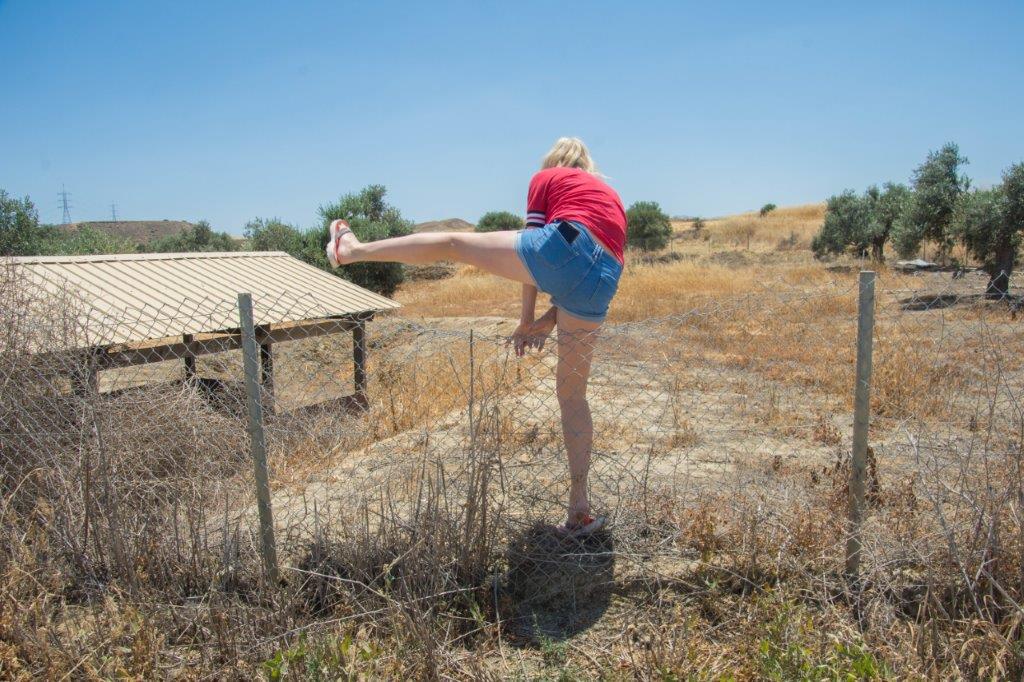
Goobie followed and Matt handed me Herc. I raced over to the stairway, desperate to look inside before someone stopped us. I was just about to have a look when Matt shouted ‘HELP!!!’
He was, I’m not joking, stuck on the fence. I’m not quite sure how he managed to get into the position he was in, but he wasn’t budging.
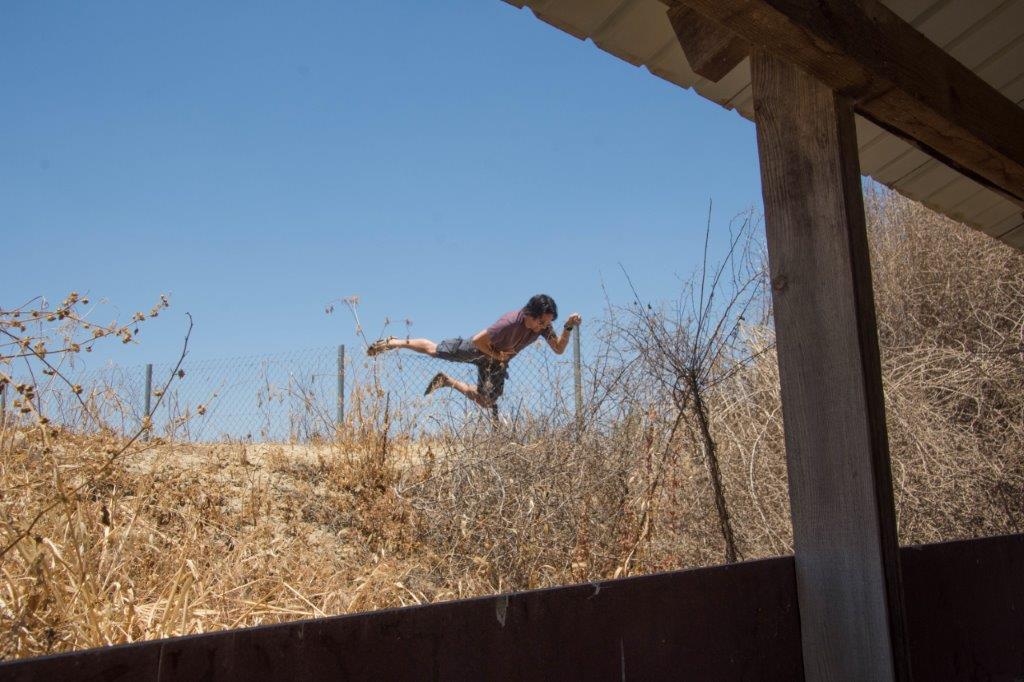
Doubled over with laughter, I wrestled with what to do. Help my crap husband or quickly sneak a peak down the tunnel before Matt drew attention to ourselves.
But Herc was about to fall down the slope so I raced back to help him. And helped Matt off his fence at the same time. I can’t remember when I last laughed so hard.
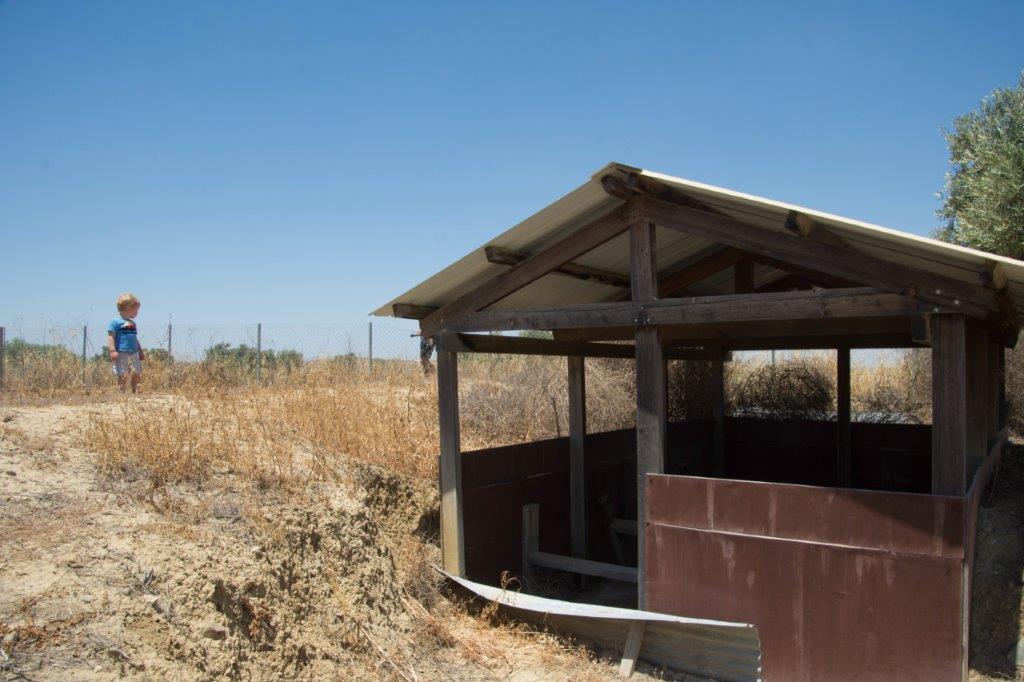
Finally! It was time to look down the mysterious stairway. The tunnel’s gaping mouth opened up in front of us, steps descending into darkness.
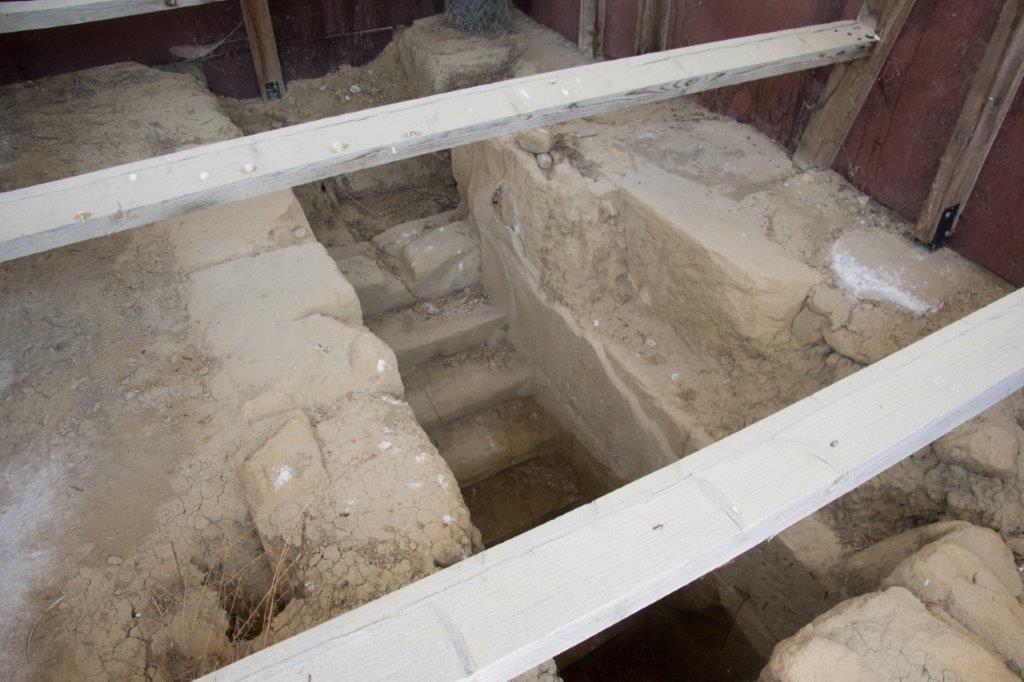
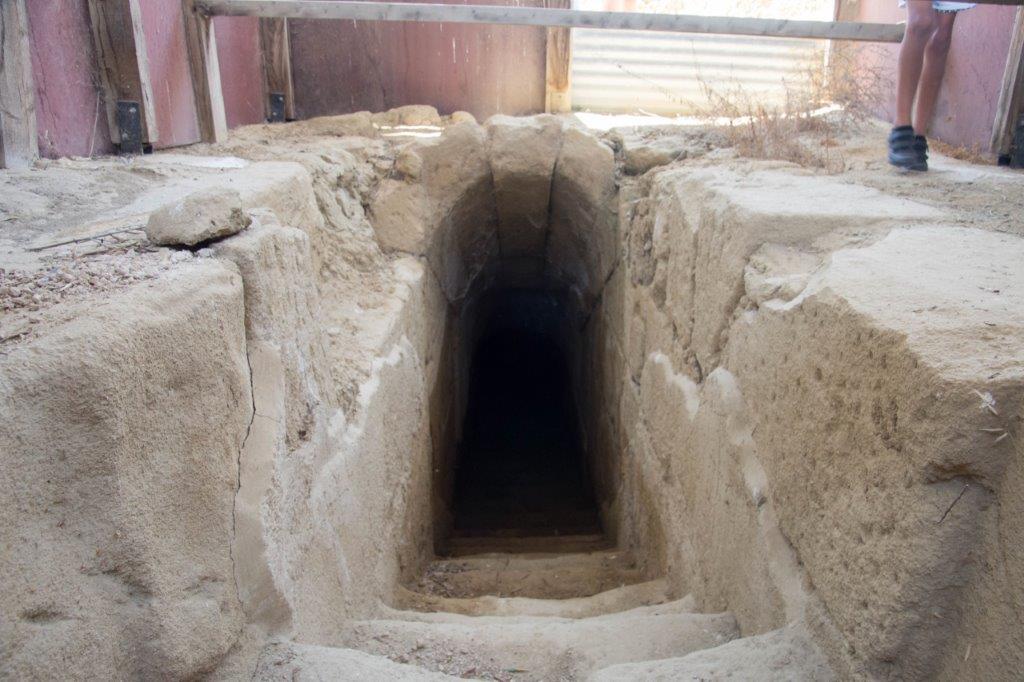
The stairs disappeared beneath a 10m-high arched roof, built from massive sandstone blocks. It looked so well-preserved.
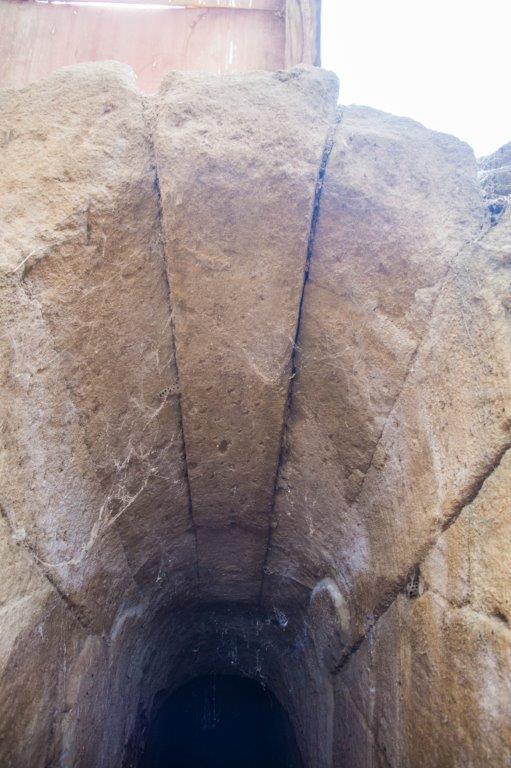
Sandstone blocks lined the tunnel too. Apparently these blocks are covered with a water resistant hydraulic cement.
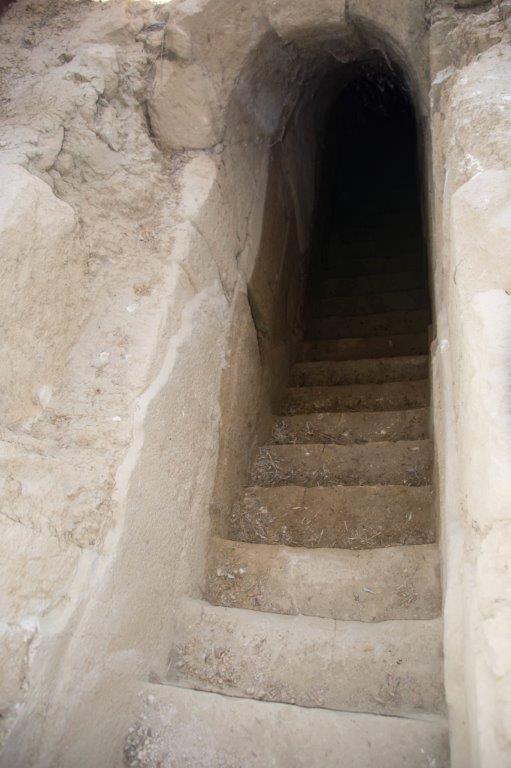
I walked slowly down the steps, beneath the arched roof and into the darkness. Ancient cobwebs hung from the ceiling that plunged 45 degrees into the earth. The light from my torch only stretched so far.
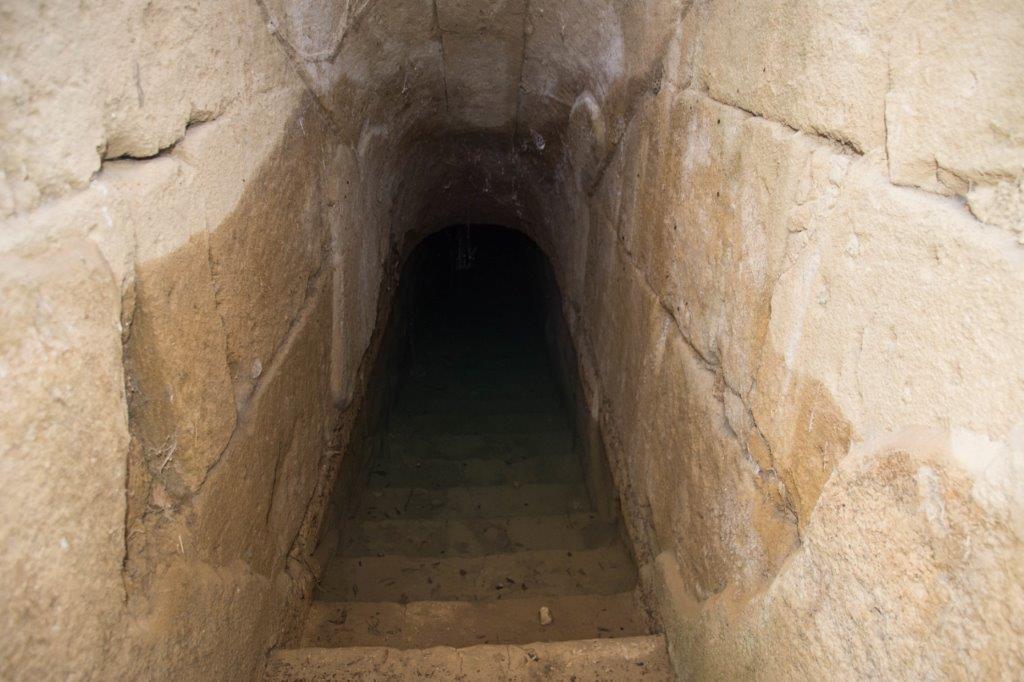
I suddenly realised I was looking at very clear water covering half of the visible steps. Goobie counted 23 steps in total. We knew that beneath the water and silt were a further 17 steps that had been excavated in 2010. And how many beyond that? Clearly the water table has risen significantly after all the rain we’ve had over winter.
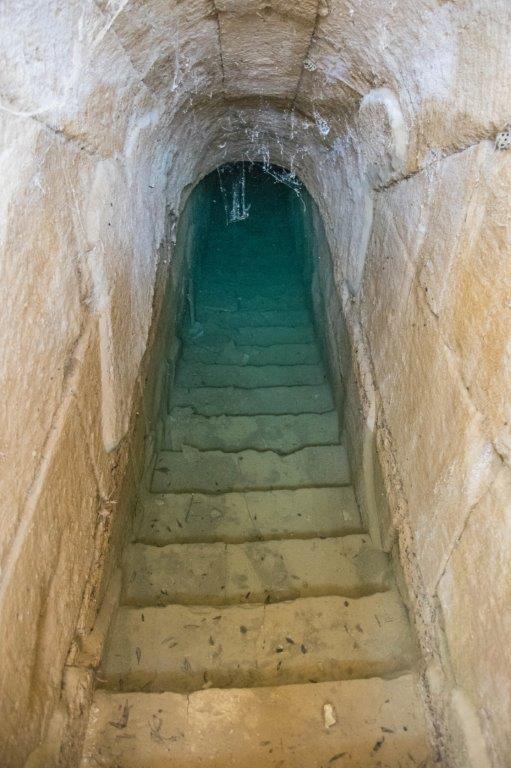
Beneath the water we could see what looked like fragments of pottery. Archaeologists found pottery and two terracotta heads during their 2010 dig, dating from 7th century BC to 7th century AD.
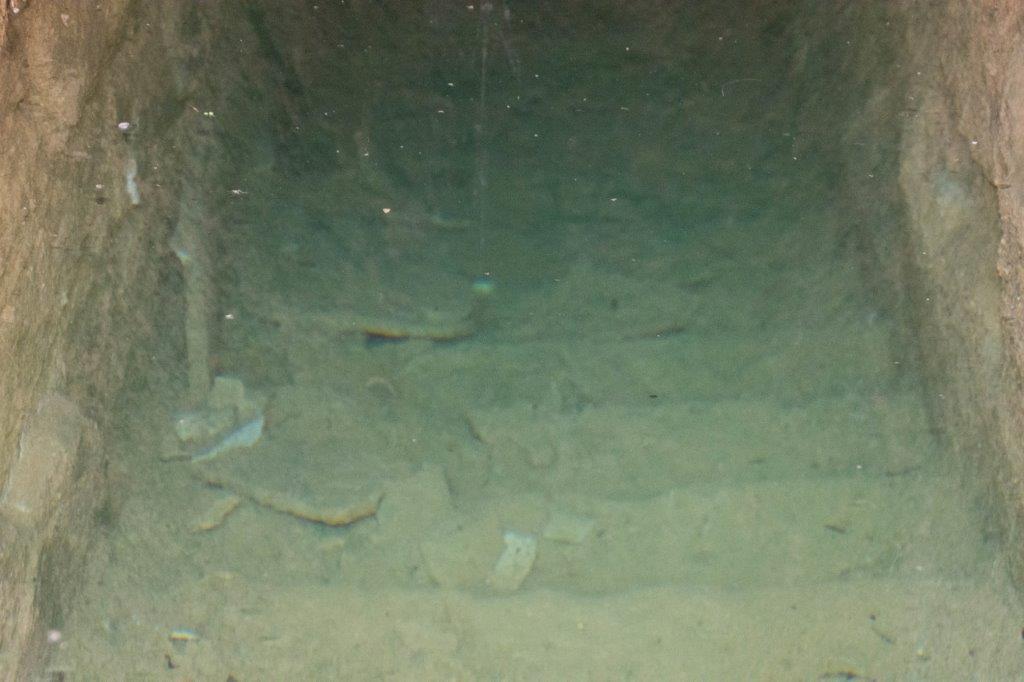
Goobie and I sat down on the steps and pondered the mystery before us. Why had this tunnel been built? It had clearly taken a huge amount of effort and skill. And where do the steps go? Archaeologists believe it is part of an ancient irrigation system, the steps leading to an underwater aquifer. Cyprus is full of them but this one is unusual because of its depth. They’d planned to excavate the remaining steps and the underwater space they led to. Why didn’t they finish? A lack of funding?
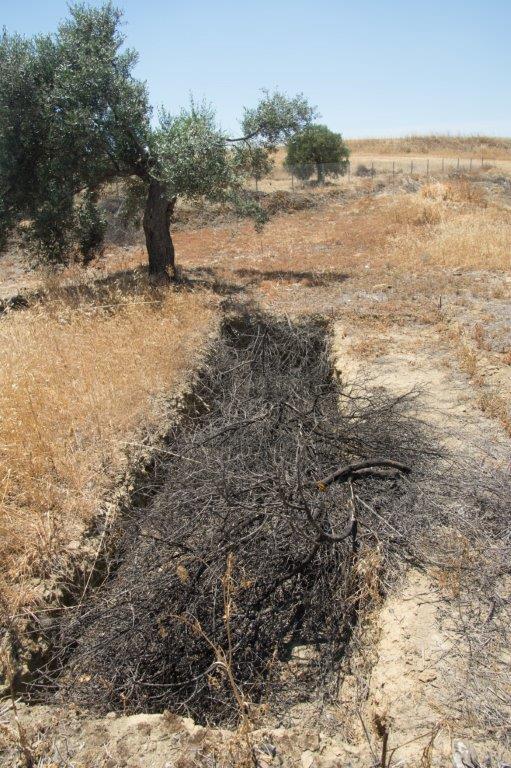
So many questions surround this place. Including why I HAD to find it. Obviously there was the thrill of the search but, once I’d found it I didn’t see anything extra than what had been in the photo on the Department of Antiquities website. Neither had I expected to. And, of course, I hadn’t expected to find treasure either.
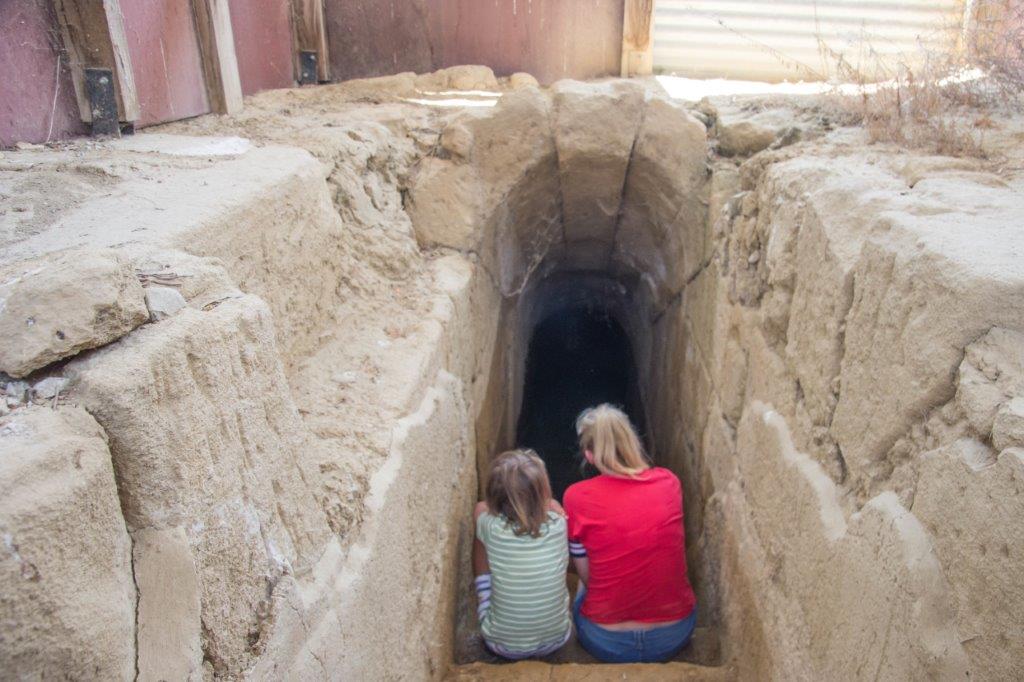
As I soaked up the mysterious atmosphere, I realised I’d been drawn here by the myths surrounding the place. Yes, it probably is an aquifer. But wouldn’t it be brilliant if it led to a room full of ancient treasure? Led to something out of the ordinary, proving that the world is still full of secrets and unknown possibilities.
This was a place where myth thins the fabric of reality. Offering something exhilarating beyond.
And that, for me, is the real treasure.
Thanks for sharing the story about Tseri and it’s mythical treasures. I remember my grandmother telling me stories about buried treasures in Tseri when I was around five or six back in the early 1960’s. shame we couldn’t visit I this year because of COVID. All the best and enjoy your adventures in the beautiful island.
2 Comments